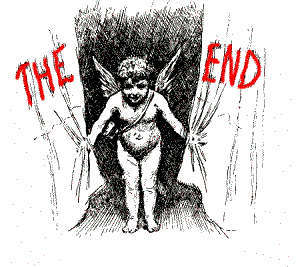April 1998
Be Still My Beating Heart --
This Is A Crisis?
Debunking the Year 2000 Bug
 READY
FOR some good bug news?
READY
FOR some good bug news?
For most PC users, the much ballyhooed
"Year 2000 bug" is right up there with Bill
Clinton's sex life on the Grossly Overrated List.
The Year 2000 (Y2K) bug refers to a
variety of date-related problems computer hardware and
software may have when the first day of the year 2000
dawns.
That's not to say there won't be some
computer grief on January 1, 2000, but the vast majority
of it will be visited on older mainframe and
minicomputers running specialized custom programs.
In the PC realm, there are really only
two issues you have to think about, one at the BIOS level
and one at the application level.
BIOS LEVEL
Want to see how truly minor the Y2K
problem is for most PC users?
OK, here's just about the scariest
possible Y2K bug blowup at the BIOS level: the date on
your machine gets changed to January 1, 1980, and you
have to manually set the machine to the correct date
(through Control Panel in Windows 95).
Be still my beating heart! Seriously,
though, at the BIOS level the Y2K bug is a Severity 4
item, which is to say the next to the least serious
possible on BugNet's rating scale.
It may cause some inconvenience
(especially for network administrators overseeing large
numbers of PCs), but that's all it is -- an
inconvenience.
Most people will probably just remind
themselves on January 1, 2000 to check the date the way
they check the clock when Daylight Savings Time goes on.
However, if you want to test the Y2K
compatibility of your computer's BIOS before the fateful
hour, there are several ways.
Directions for manually testing your
BIOS's Y2K compatibility are available at Robert
Hilliard's Y2K PC BIOS Page at http://www.tyler.net/tyr7020/y2kinput.htm. A popular automatic test that runs within
Windows 95 is available at http://www.y2000fix.com. Y2000fix.com also provides software to ease
your PC through the millennial rollover automatically.
Another good source of Y2K info is
Computer Currents columnist (and Quarterdeck TuneUp.com
product manager) Jim Aspinwall's Y2K Resource Page at http://www.raisin.com/year2000/.
In BugNet's own tests, it appears the
following rule generally holds true:
- If you bought your PC after the
spring of 1996, you're probably OK.
- If you bought it before the spring
of 1996, you probably have some degree of Y2K
BIOS incompatibility.
APPLICATION LEVEL
An entirely different Y2K problem
exists at the application level.
If your PC runs on January 1, 2000,
your programs will run too -- but occasionally
date-related functions in some programs may not behave
entirely as expected.
On it's Y2K compliance page is at http://www.microsoft.com/year2000/, Microsoft identifies several of its programs
that may have Y2K problems of one sort or another,
including Internet Explorer 3.x and 4.x, Access 2.0, Word
for MS-DOS 5.0 and Office Professional 4.3, as well as
Windows 95, Windows for Workgroups 3.11, NT Server 4.0,
NT Workstation 4.0.
However, the programs most likely to be
affected are popular spreadsheets like Microsoft Excel,
Lotus 1-2-3, and Corel Quattro, but ONLY if the user
entered dates in two-digit form.
The reason is that each spreadsheet has
its own formula for converting two-digit dates. Excel
assumes that any two-digit date up to 28 should be
prefaced with 19, while every two-digit date above this
should be prefaced with 20.
Quattro makes the century cutoff at
50/51, and 1-2-3 assumes that every two-digit number
refers to a 20th century date, as do older versions of
Excel.
A good discussion of the two-digit date
issue in Excel, 1-2-3, Quattro, along with Microsoft
Access and Lotus Approach, is available on CMP TechWeb at
http://www.techweb.com/wire/story/y2k/
TWB19980330S0004.
According to Computer Reseller News,
here's how the three spreadsheets may interpret a few
different two-digit dates:
| Two-digit Date |
Excel |
1-2-3 |
Quattro |
| 28 |
2028 |
2028 |
2028 |
| 29 |
1929 |
1929 |
2029 |
| 50 |
1950 |
1950 |
2050 |
| 51 |
1951 |
1951 |
1951 |
Clearly, the two-digit date
problem is not going to affect a lot of people, but it
does have the capacity to screw up some spreadsheet
projections.
Even so, this isn't really a bug
at all -- just a discrepancy in how competing programs
handle date related issues.
SO
THERE. You just sat through the Y2K bug
equivalent of the shower scene in Alfred Hitchcock's Psycho.
Are you scared stiff? Are you mildly
alarmed? Are you even awake?
We at BugNet see hundreds of more
serious problems every month, but somehow sloppy
programming and bad design don't inspire the millennial
mania.
That's OK, though. It's nice every now
and then to have good news to report.
-- Bruce Brown
© BugNet material copyright 1994-1999 by BugNet.
® BugNet is a Registered Trademark of KeyLabs.
Astonisher.com material is
© Copyright 1973 - 2020 by Bruce Brown and BF Communications Inc.
Astonisher.com is a trademark of BF Communications Inc.
This historic replica of BugNet from the period 1994-1999
is presented by astonisher.com with the permission of BugNet.
BF Communications Inc.
P.O. Box 393
Sumas, WA 98295 USA
(360) 927-3234
Website by Running Dog 

![]()






 READY
FOR some good bug news?
READY
FOR some good bug news?